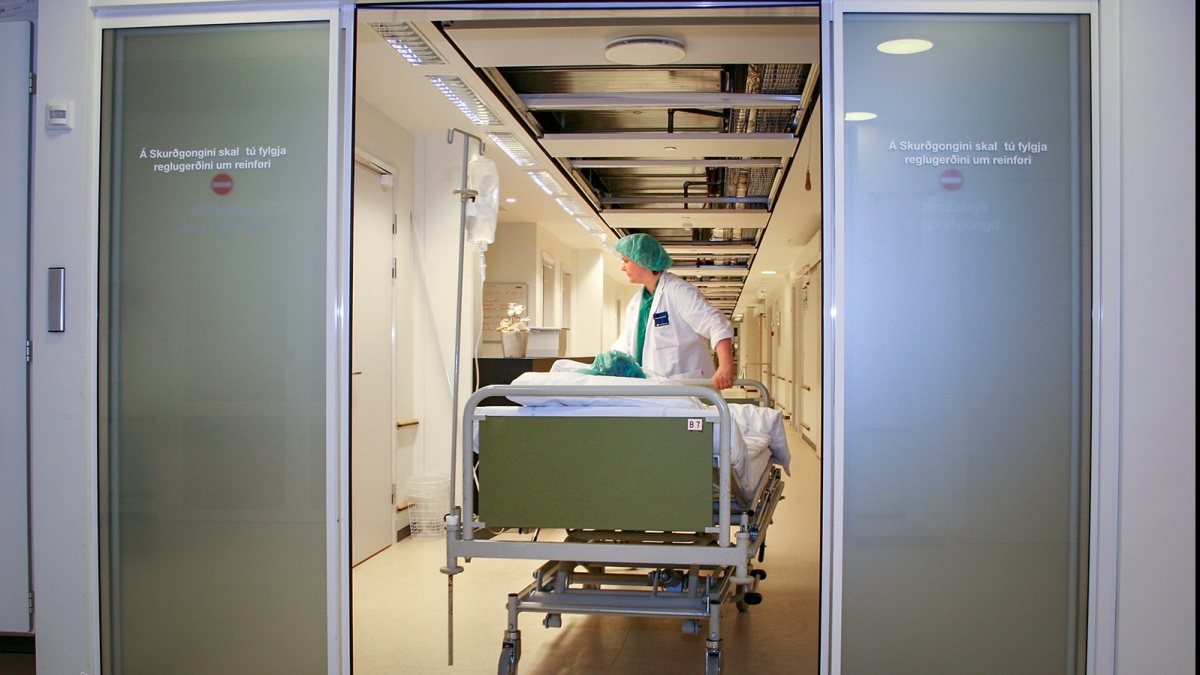Employees
14. Jan 2025
30,250 employees in December — up 0,3% year-on-year

Employee numbers continue to grow, but the growth has slowed down over the past year, as seen in the trend after adjusting for seasonal variations and other random changes.
In December, there were 30,244 employees in the Faroes. This is 91 people (0.3%) more than in December last year.
[px-graph-1]
More male workers – no change for women
In December, there were just over 15,500 male and almost 14,750 female employees in the Faroese labour force. Compared with December 2023, we see an increase of only three women, whereas the number of males climbed by almost 100, corresponding to an increase of 0.6%.
[px-graph-2]
Increasing female representation in public employment
In December, almost 60% of all employees worked for employers under private control. Just over 40% worked for publicly controlled employers, which include public institutions and public limited companies.
Just over 60% of women in the labour force worked for publicly controlled employers in December. The trend in the graph below shows that this is the group with the highest relative growth in the past three years.
Women working for privately controlled employers, on the other hand, have experienced a negative trend over the past two years.
For men, the picture is different. Three out of four men work for employers under private control. The trend in the graph shows that this figure has been on a steady rise in recent years. The number of men working for employers under public control is more stable.
[px-graph-3]
Public sector leads job creation
The industrial branches with the largest number of employees were ‘Public administration and defence; compulsory social security’ and ‘Human health and social work’, with more than 100 employees added to these two categories since December 2023.
‘Residential care activities’, a subsector within ‘Human health and social work activities’, saw a particularly high increase, with almost 150 additional employees, marking a 7% year-on-year increase.
Conversely, ‘Manufacturing’ experienced the biggest decline in employment in both absolute and relative terms, declining by more than 160 employees (4.8%) year-on-year.
[px-graph-6]
Non-resident employee growth stalls
To qualify as a long-term resident, an individual must have resided in the Faroes for either half of their lifetime or for seven consecutive years at some point in their life.
Recent years have seen a significant increase in employees without long-term residency status. This growth has now slowed down. In December, there were almost 20 employees (less than 1%) without long-term residency, compared with December 2023. From December 2022 to December 2023, this figure was just over 110 (6%). The difference between December 2021 and December 2022 was 24%.
[px-graph-5]
20% fewer minor jobs
The number of minor jobs (or side jobs) was almost 20% lower than in December 2023. The average number of jobs per employee is just above 1.2, which is about the same as in previous months.
For more details about jobs and employers, see the box below this article.
[px-graph-6]
About the employee statistics
Statistics Faroe Islands’ employee statistics include persons aged 13 or over who receive wages taxed at source (known as A-income in the Faroes) in the registered month, corresponding to at least 4 hours per month through the pay-as-you-earn (PAYE) tax system.
Statistics on employees and jobs follow the guidelines in the International Labor Organization (ILO) manuals on employees and jobs under the United Nations. The ILO defines an employee as a person of working age who has been employed by an employer for at least a short period and has produced goods or provided services for a wage. This includes a) employed persons who have worked at least 1 hour during the period (typically set to 1 week) and b) employed persons who are temporarily out of work (due to e.g. sick leave, parental leave or time off in lieu).
The source of employee statistics is monthly A-income through the PAYE tax system. In accordance with the international standard of at least 1 hour per week, the monthly wage threshold is calculated as 4 hours of wages per employee, since there are about four weeks in a month. The hourly wage is set as minimum wage + holiday pay as per the agreement between the Faroese Labour Union and the Faroese Employers' Union. This means that if the monthly wage is below the limit, the person is not considered an employee that month. According to the Faroese Work and Safety Inspectorate, 13 is set as the lower age limit in the statistics as children younger than 13 cannot be employed.
Updates to employee statistics
In the first half of 2024 the employee statistics have been updated and revised. This has brought about a slight increase in the total number of employees. On average, the number of employees is now 500-1,500 higher each month, for various reasons. Primarily because the new statistics cover a wider age range. The previous figures covered ages 16-74, but now anyone aged 13 or over is included. Other changes include a lower wage threshold value, the addition of more parental leave registrations and the fact that certain payments through the PAYE tax system, previously not considered wages, are now correctly recorded as wages. Most of these payments were previously registered as public benefits, and the new registration affects the employee statistics. With these changes, the latest figures cannot be compared to previous data. The old tables are, however, still accessible in the statbank but will no longer be updated. These tables are labelled 'Outdated' in the statbank.